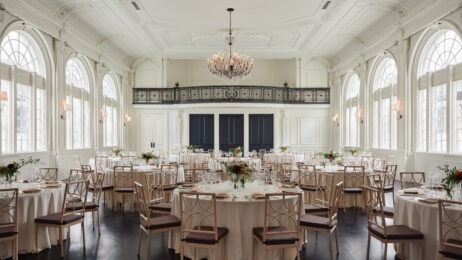On Friday, the Centers for Disease Control and Prevention (CDC) released guidelines for events and gatherings. The list of considerations came out as many states have begun to re-open their economies and communities begin to plan events again. Here is an overview of the CDC’s recommendations so you can make sure your next event is CDC approved.
Levels of Risk

Considerations for Healthy Behaviors
- Promote healthy behaviors by educating and advising staff and attendees to stay home if they feel unwell
- Require frequent hand washing, sanitation and covering the nose and mouth with a tissue if sneezing or coughing
- Require staff to wear cloth face coverings and encourage guests to do the same. Provide guidance on proper use, removal and washing of face masks. Note: Face masks should not be placed on anyone who has trouble breathing, anyone who would be unable to remove the mask on their own (i.e. if they are unconscious) or any child under the age of two
- Post signs and messages around the venue to promote social distancing and everyday protective measures. Broadcast regular announcements on reducing the spread of COVID-19 and consider developing signs in different formats, such as braille or American Sign Language
Guidelines for Healthy Environments
- Clean and disinfect shared and frequently touched surfaces between uses
- Close those areas that cannot be easily cleaned throughout an event (i.e. drinking fountains)
- Safely use and store cleaning products
- Use EPA-approved cleaning products
- Limit the number of people allowed in restrooms and ensure six-feet distancing between individuals in line for, and in, the restroom
- Ensure sanitation of restrooms and adequate supply of hand-washing products
- Ensure ventilation operates properly and increase outdoor air circulation as much as possible
- Modify layouts to ensure distance between guests, use multiple entrances and exits and eliminate lines where possible
- Prioritize outdoor activities and offer online attendance where possible
- Install physical guides and barriers such as tape on the floor at six feet intervals and sneeze guards
- Stagger use of shared indoor spaces such as dining halls, game rooms and lounges
- During food service, encourage contactless payment options, use disposable food service items and avoid buffets, salad bars and drink stations. For food service at events, follow the CDC’s considerations for restaurants and bars.
Related: Hotels Respond to COVID-19 with New Cleaning Standard
Maintaining Healthy Operations
- Be aware of local, state and regional regulations and prioritize them
- Offer alternative options for staff or attendees that are high-risk. This includes virtual attendance, remote work or event set up instead of working during an event.
- Limit attendees, stagger entrances or rotate shifts and attendance times
- Encourage transit options that are low-risk such as walking, bicycling or driving
- Designate a COVID-19 point of contact so information is easily communicated
- Help out your staff: implement flexible sick leave policies, train staff on all safety protocol, recognize symptoms and have a back-up staffing plan
Preparing for If Someone Gets Sick
- Tell staff to remain home until they have met the CDC’s criteria to discontinue home isolation.
- Isolate and transport home anyone who has COVID-19 symptoms or has been in contact with someone with COVID-19
- Close off any areas touched by a sick person and do not reopen them until they have been cleaned and disinfected
- Notify health officials, staff and attendees if anyone is sick and advise anyone who had close contact with a person diagnosed with COVID-19 to stay home and follow CDC guidance if symptoms develop.
Check out the full CDC report here and keep up to date on the latest COVID-19 news and its’ effects on the meetings industry here.




